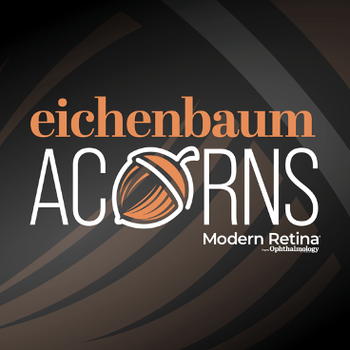
Q&A: David Eichenbaum, MD, on the ARCHER-2 study for dry AMD and GA
David A. Eichenbaum, MD, FASRS, a partner and director of research at Retina Vitreous Associates of Florida and collaborative volunteer Associate Professor at the Morsani College of Medicine at the University of South Florida in Tampa presented at the 2025 American Society of Retina Specialists (ASRS) meeting. This meeting took place in Long Beach, California, from July 30 through August 2, 2025.
His presentation at this event was titled, "ARCHER II, a phase 3 randomized clinical trial of ANX007 in patients with dry AMD and GA: Study design and rationale informed by outcomes from ARCHER." Eichenbaum shared the highlights from this presentation and the research with Modern Retina.
Note: The following conversation has been lightly edited for clarity.
Modern Retina: You are presenting here at the 2025 ASRS meeting. What do you consider the key takeaways from your talk on the ARCHER II trial?
David A. Eichenbaum, MD, FASRS: I am excited to be here at the American Society of Retina Specialists meeting 2025 to talk about the ARCHER II study. The design and the rationale for enrolling the study based on the results of the phase 2 ARCHER study.
Four takeaways from my presentation.
Number 1: The ARCHER-2 study upon approvement is fully enrolled. Enrollment is done. Now we just got to retain the patients see what the results are.
Number 2: This is a visual-functional endpoint. There is an event analysis of 15 letter loss that marks the endpoint. Therefore, this trial potentially has a global pathway for approval for a geographic atrophy drug with a meaningful, visual-functional endpoint.
Number 3: The phase 3 trial takes the phase 2 trial's inclusion criteria of center involving and non-center involving GA and visual acuity of 45 letters or worse, meaning 20/100 or worse is an exclusion, whereas the center involving GA can be an inclusion and mirrors those, improving our probability of meeting the endpoint in the phase 3 trial.
And lastly, it's important to put all this together and understand that upon aprovement, [it] may be the very first globally approved therapy in geographic atrophy that has a meaningful change in visual function, which is something the space needs. We are amazed that we have geographic atrophy treatments, but we know there's a long way to go, and we're excited for the future.
Newsletter
Keep your retina practice on the forefront—subscribe for expert analysis and emerging trends in retinal disease management.





